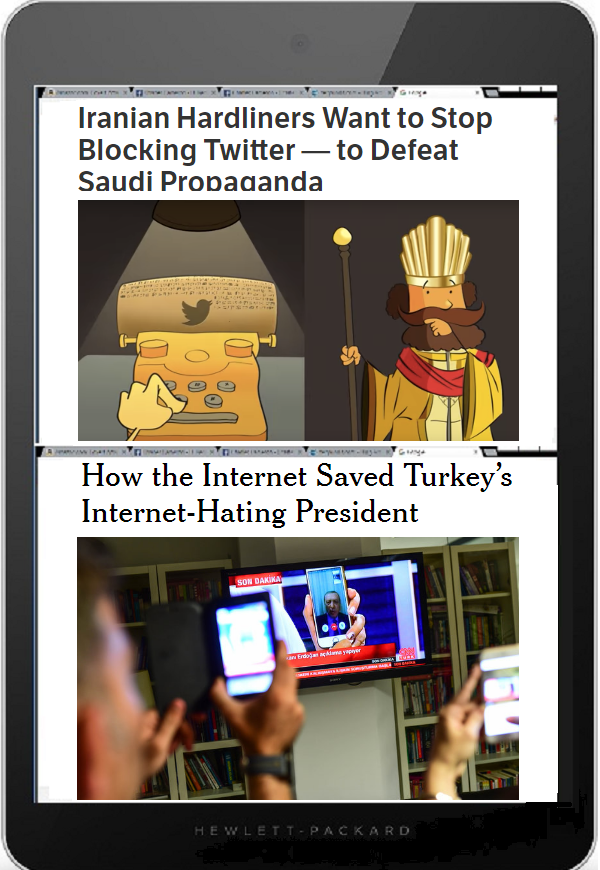Net gains in Turkey and Iran?
[ by Charles Cameron — when two data points contradict a trend, what’s up? ]
.
Gotta love the graphic of “Twitter being written into the ancient Persian Cyrus Cylinder in an animation film for Farsi Twitter, highlighting the platforms importance for communications in Iran” (upper panel, below):
— and there’s something faintly Escherian about the screengrab of Turkish President Erdogen in, what, a hall of screens? (lower panel, above).
I’ve said before that single data-points mean little, but two of them — outliers from a general trend — may consitute an eddy in the stream, a knot in the wood, a disturbance in the force worth noting, worth looking into.
Thus far, our interest in social media in the Middle East has largely focused on terrorist uses [eg Berger 1, 2] and counter-terrorism & CVE measures [eg Aistrope], with a sidelong glance at authorities blocking the net {eg Kerr]..
**
Here’s the video:
Sources:
Zeynep Tufekci / NYT, How the Internet Saved Turkey’s Internet-Hating President Global Voices, Iranian Hardliners Want to Stop Blocking Twitter — to Defeat Saudi Propaganda
Food for thought:
Note that knots in wood are generally indicative of a third-dimensional force, oblique to the wood’s surface plane. In considering any situation analogous to a knt in wood or eddy in a river, it’s worth asking: is there an oblique force at work disturbing the current, and if so, what is it, why here, and what does it portend?



